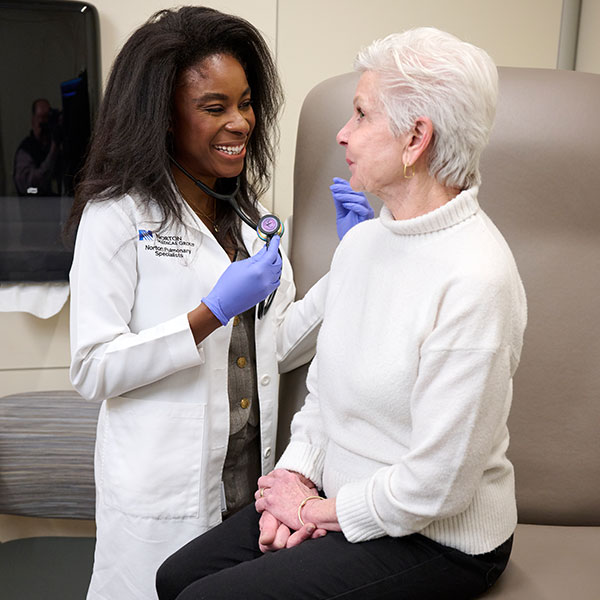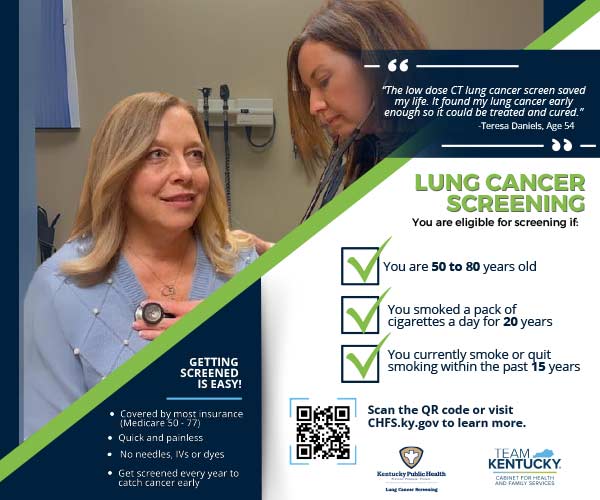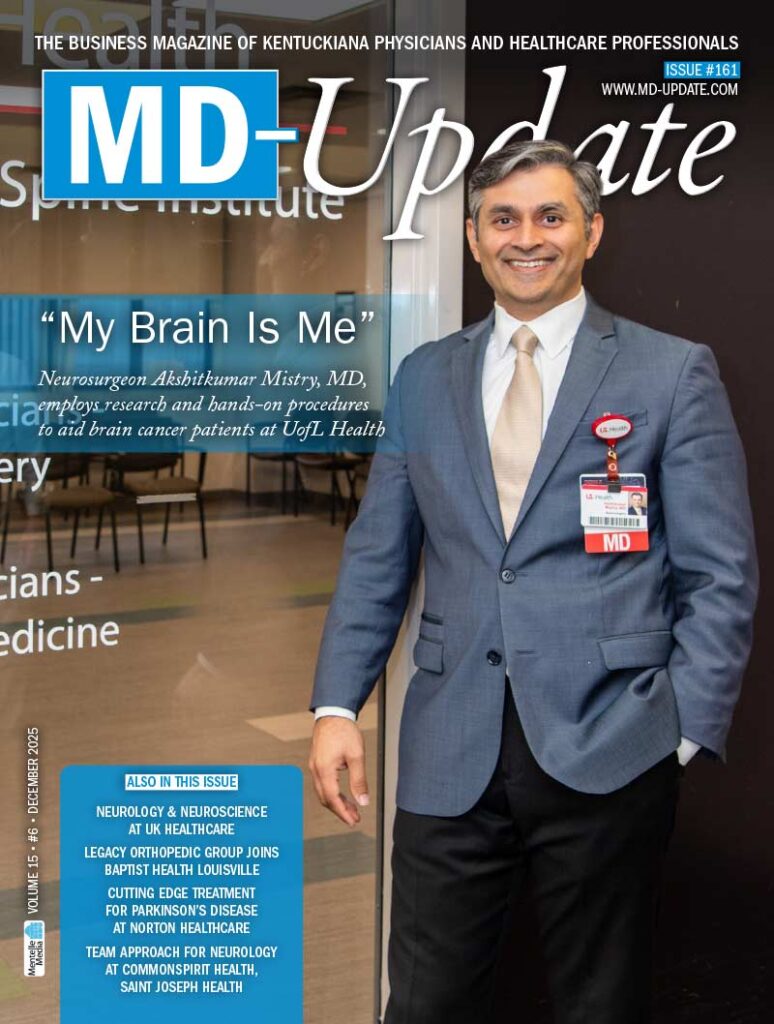Pulmonologist at Norton Healthcare sees long-term COVID and environmental factors in her practice.
LOUISVILLE The profound impact COVID-19 had on patients not only colored the view Samantha Baah, MD, had on her specialty as a pulmonary and critical care physician, but continues to impact her practice, she says.
Baah, a pulmonary and critical care specialist with Norton Pulmonary Specialists, was completing her pulmonary and critical care fellowship at the University of Rochester Medical Center in upstate New York, when the COVID-19 pandemic hit. As she began her career at Norton Healthcare in mid-2021, she found herself working through the second wave of the pandemic.
“It was devastating what we were seeing, and it taught me a lot,” Baah says. “The amount of collaboration and camaraderie and teamwork in the ICU… it was quite remarkable. It would be me, a respiratory therapist, and one of the bedside nurses. The amount of resuscitation these patients needed every day… it’s something that I often think about and reflect upon. It was an unfortunate time, but it really taught me a lot about healthcare and teamwork and how this is what we were put on this earth to do.”
One of eight children, Baah was the first in her family to graduate high school and college. After earning her medical degree from the American University of Antigua College of Medicine, she completed her internal medicine residency at Cooper University Hospital in South Jersey, followed by her pulmonary disease and critical care fellowship at the University of Rochester in upstate New York. In 2021, Baah and her husband, Nana Ohene Baah, MD, moved to Louisville where

she took her position at Norton Healthcare in pulmonary and critical care and he took a position in interventional radiology at UofL Health.
Called to Her Life’s Work
Finding solutions to extend patients’ quality of life is a calling, she says.
“When I first started, I had a sweet little lady in her late 60s who was on two liters of oxygen around the clock. She came to me for a second opinion,” Baah says. “She had pulmonary fibrosis and COPD and was told to ‘put her affairs in order’ because she was told she was dying. I was able to optimize the treatment for her COPD and sent her for some additional testing. By the time I saw her the second time in clinic, we had removed her from the oxygen, and with treatment for her COPD, she was able to get her life back.”
Living in Kentucky where pulmonary issues are more profound, she sees an inter-relationship between pulmonary diseases and the environment.
“We are here in the Ohio River Valley where there’s a lot of granulomatous disease with acute and chronic changes in the lungs. This patient population is very unique and can be challenging,” Baah says. “When I was in New York I would see what I thought were rare manifestations of granulomatous disease and would want to write the case up and get it published because we didn’t see it as often. When I came here, I often see various clinical manifestations of granulomatous disease, some life threatening. I’m constantly learning how complex this patient population is.”
Baah didn’t start out in pulmonology, however. Pulmonology as a specialty chose her as much as she chose it, she says.
“When I was in medical school, it was unclear to me what my calling in medicine was. At one point I wanted to do OB-GYN, at another point I wanted to do surgery, then GI,” she says. “But there was just something about seeing a patient who had a chronic pulmonary condition that really sparked my interest. Patients with shortness of breath from chronic lung disease often feel they are prisoners to their own bodies. We take breathing for granted every single day, but these patients are crippled by it. I wanted to find ways to help these patients breathe better, live longer, and truly be free from the crippling effects of their chronic pulmonary condition.”
Pulmonologists Are Needed
The need for pulmonologists is increasing, she says. “I think with COVID and other respiratory viruses, there can be both short- and long-term consequences in the lung. Some of these patients can develop bronchitis, inflammation in the airways and lung tissue and even some scarring of the lungs. “I’ve had patients in clinic several months from their viral infection who still have significant symptom burden. Viruses may alter the airway and cause patients to suffer from respiratory symptoms like shortness of breath and cough that they never had before.”
And those issues are affecting younger patients, something she attributes to a changing environment. “It’s a common misconception that only smokers have lung disease. We see a wide array of lung disease, in the very young, the very old, and everyone in between. By the time most patients see a pulmonologist, they have been struggling for years.”
New Technologies for Diagnosis
Pulmonology is adapting to new technologies using robots and artificial intelligence to assist in the early detection and diagnosis of lung cancer, Baah says. “Previously, there were spots in the lung that were too small to biopsy or in a location we simply couldn’t get to safely. With robotic assisted bronchoscopy, we can reach areas in the lung we couldn’t reach before.”
“With robotic assisted bronchoscopy, if there’s a lesion that looks suspicious, we now have the technology to get a tissue diagnosis. The patient is sedated while a 3.5 mm catheter is inserted through an endotracheal tube. We control this catheter to move through the tiny airways of the lung to reach the lesion or nodule of interest,” she says. “Most times we are able to provide patients with preliminary information the day of the procedure.”
Baah works with GSK with inhalers for COPD and teaches robotic bronchoscopy with Intuitive Surgical for robotic bronchoscopy. In Baah’s opinion, AI will be an asset to building an incidental pulmonary nodule program to capture lung cancer patients earlier. “Often times patients with lung cancer don’t present with any symptoms of lung cancer until their disease has progressed to a more advanced stage. With AI, we are able to capture patients with incidental pulmonary nodules found on imaging studies done for unrelated reasons in hopes of capturing and diagnosing patents with lung cancer sooner.”
Baah says that her passion is providing those patients with pulmonary disease the hope of a brighter future. Too often, she says, patients come to pulmonologists when they are late in their diagnosis.
“When patients have end-stage lung disease, we still have something to offer; having end-stage lung disease is not a death sentence,” she says. “If we can catch patients earlier, we can get them on treatment plans to decrease risk of progressive disease and discuss ways to improve morbidity and mortality. Even when patients have lost hope, I feel there is always something that we can offer to optimize their treatment.”
“I am always inspired by the patient. There’s always hope. My goal is to connect with my patients, provide them with an understanding of their lung disease, and ensure they received quality, evidence-based pulmonary care,” says Baah.



